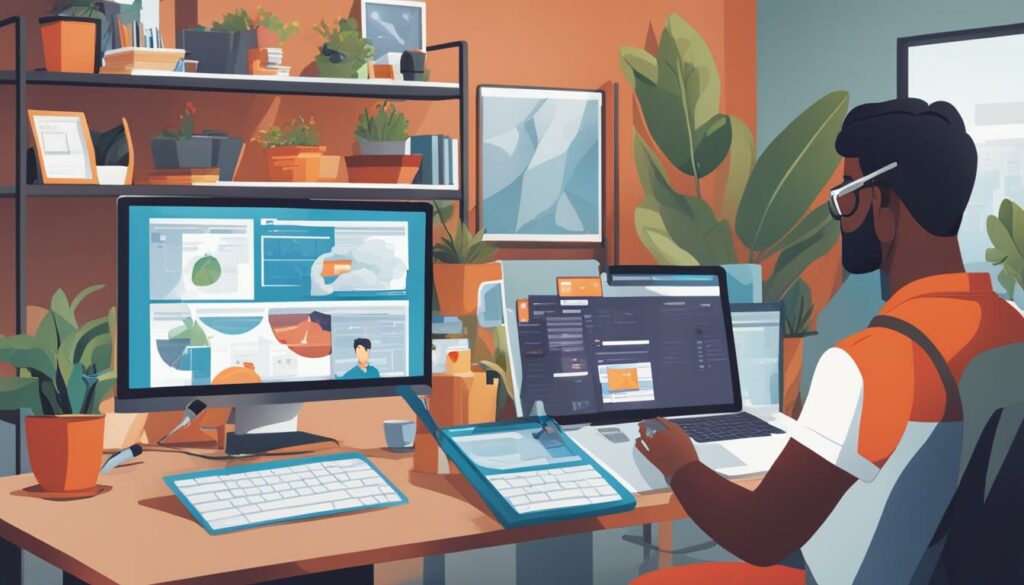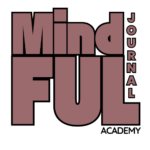Remote work has become a new lifestyle for many individuals, with the COVID-19 pandemic accelerating the shift from traditional office environments to working from home. While remote work offers flexibility and convenience, it also presents challenges in maintaining a healthy work-life balance and promoting overall wellness. This article explores strategies and tips for balancing health and productivity while working remotely. From creating a conducive remote workspace to nurturing mental and physical health, these insights will help individuals thrive in a remote work environment. Whether you’re new to remote work or a seasoned professional, implementing these practices will contribute to your well-being and productivity.
Key Takeaways:
- Implement strategies for creating a conducive remote workspace.
- Nurture your mental and physical health through mindfulness, exercise, and proper nutrition.
- Utilize tools and technology to streamline remote workflows and enhance productivity.
- Establish clear work-life boundaries to maintain a healthy balance.
- Prioritize self-care and well-being while working remotely.
Creating a Conducive Remote Workspace for Enhanced Productivity
A well-designed remote workspace is essential for enhancing productivity and overall wellness while working from home. This section focuses on creating an ergonomic and distraction-free work environment.
Choosing the Right Ergonomics for Your Home Office
When setting up your home office, it’s important to choose the right ergonomics to ensure a comfortable and healthy workspace. Start by selecting a chair and desk that support proper posture and reduce the risk of physical strain. Look for adjustable features that allow you to customize the height and position of your workstation. This will help prevent back pain, neck strain, and other musculoskeletal issues that can negatively impact your productivity and well-being.

Striking the Balance Between Comfort and Distraction
While comfort is crucial for a productive workspace, it’s equally important to minimize distractions that can hinder your focus. Find a quiet area in your home where you can work without interruptions. Consider using noise-cancelling headphones or playing background music to create a conducive atmosphere. Keep your workspace organized and free from clutter to promote a clear and focused mindset. By striking the right balance between comfort and minimal distractions, you can optimize your remote work experience.
Lighting and Climate: Setting the Ambiance for Focus
The lighting and climate in your remote workspace can significantly impact your productivity and mood. Natural light is ideal for a well-lit and energizing environment, so position your desk near a window if possible. Use adjustable blinds or curtains to control glare and brightness throughout the day. Additionally, consider incorporating task lighting for specific work areas that require extra illumination.
Climate control is also essential for a comfortable workspace. Maintain a temperature that suits your preferences and promotes focus. Use fans or portable heaters to regulate airflow, ensuring optimal comfort throughout the day. By optimizing lighting and climate conditions, you can create a harmonious atmosphere that enhances productivity and well-being.
Remote Work Wellness: Nurturing Your Mental and Physical Health
Remote work can have a significant impact on both mental and physical health. It is crucial to prioritize your overall well-being while working remotely. This section explores strategies for nurturing mental and physical health, enabling you to thrive in your professional and personal lives.
Incorporating Mindfulness and Meditation Into Your Routine
Mindfulness and meditation can play a vital role in reducing stress, improving focus, and enhancing overall mental well-being. Taking a few minutes each day to practice mindfulness and engage in guided meditation can have a profound positive impact on your mental health.
Exercise and Movement: Staying Active While Working from Home
Working remotely often involves extended periods of sitting, which can lead to a sedentary lifestyle. Incorporating regular exercise and movement into your routine is essential for maintaining good physical health. You can take short breaks for stretching, go for walks, or even engage in home workouts to keep your body active and energized.
Nutrition: Fueling Your Body for Better Work Performance
Eating a healthy and balanced diet is vital for optimal work performance. When working remotely, it can be tempting to rely on convenient but unhealthy food options. Instead, prioritize nutritious meals and snacks that provide sustained energy throughout the day. Include plenty of fruits, vegetables, lean proteins, and whole grains in your diet to support your overall well-being.
To summarize, taking care of your mental and physical health is crucial when working remotely. By incorporating mindfulness and meditation, staying active through exercise and movement, and prioritizing healthy eating, you can maintain a balanced and fulfilling remote work experience. By nurturing your well-being, you will be better equipped to thrive both professionally and personally.
Tools and Technology for Streamlined Remote Workflows
In the digital age, technology plays a vital role in streamlining remote work. Utilizing the right tools and technology can enhance productivity and efficiency in remote workflows, enabling effective collaboration and task management for remote teams. From project management software to communication platforms, there are various remote work productivity tools and remote work technology solutions available to optimize remote work processes.
One essential tool for remote teams is collaboration software. Collaboration software allows team members to easily communicate, share files, and work together on projects, regardless of their physical locations. Popular collaboration software options include:
- Slack: A real-time messaging platform that facilitates communication and collaboration within teams.
- Microsoft Teams: An integrated collaboration tool that combines chat, video meetings, and file sharing.
- Google Workspace (formerly G Suite): An all-in-one suite of productivity tools, including Gmail, Google Drive, and Google Docs, that enables seamless collaboration.
Project management software is another crucial component for streamlined remote workflows. These tools help teams organize tasks, track progress, and manage projects effectively. Some widely used project management software options include:
- Asana: A flexible project management tool that allows teams to create and assign tasks, set deadlines, and monitor project timelines.
- Trello: A visually intuitive project management tool that uses boards and cards to help teams track and prioritize tasks.
- Jira: A powerful project management and issue tracking tool that is commonly used in software development teams.
In addition to collaboration and project management tools, remote workers can also benefit from other remote work technology solutions such as virtual meeting platforms and cloud storage services. These tools enable remote teams to conduct virtual meetings, share presentations, and access files from anywhere, ensuring seamless remote collaboration.

Strategies for Cementing Work-Life Boundaries
Establishing work-life boundaries is crucial for maintaining a healthy and fulfilling remote work experience. This section provides strategies for individuals to create a clear separation between work and personal life. By implementing these practices, you can achieve a harmonious work-life integration that promotes both productivity and well-being.
Defining Your Work Hours and Learning to Log Off
One of the key strategies for cementing work-life boundaries is clearly defining your work hours. Set specific start and end times for your workday and communicate these hours to your colleagues and clients. By establishing a predictable schedule, you can avoid the temptation to work outside of designated hours and maintain a healthy work-life balance.
Learning to log off and disconnect from work at the end of the day is equally important. Close your work-related applications, turn off notifications, and resist the urge to check emails or complete tasks during your personal time. This intentional disengagement from work allows you to focus on personal activities, recharge, and prevent burnout.
Remember, setting boundaries with your work hours and consciously logging off are essential for prioritizing your personal life and nurturing your well-being.
Physical Separation: Tips for Disengaging from Work Mode
Creating a physical separation between your work and personal spaces is another effective strategy for maintaining work-life boundaries in a remote work setup. Allocate a dedicated area in your home as your workspace, ideally a separate room or a corner where you can focus and be productive.
When you step into your designated workspace, you enter work mode, and when you leave that space, you transition to personal time. This physical separation helps train your mind to associate different areas of your home with specific activities, ensuring a clear distinction between work and non-work hours.
Additionally, as you end your workday, tidy up your workspace, organize your materials, and put away any work-related items. By physically clearing your workspace and storing work materials out of sight, you signal to yourself that work is done and it’s time to transition into your personal life.
Communication Tactics: Conveying Availability to Colleagues and Clients
Effective communication is vital for establishing work-life boundaries and preventing work-related interruptions during your personal time. Clearly convey your availability to colleagues and clients, so they understand when you’ll be actively working and when you’ll be offline.
Use your email signature or messaging platforms to indicate your work hours and response times. Set up automated email responses during non-work hours to manage expectations and inform senders when they can anticipate a reply. Encourage colleagues to respect your boundaries, and don’t hesitate to politely remind them when they reach out outside of your designated work hours.
Utilize collaboration tools, such as project management software or shared calendars, to keep everyone on the same page regarding project timelines, deadlines, and individual schedules. By fostering clear communication and setting mutual expectations, you can minimize work intrusions during your personal time and maintain a healthier work-life balance.
Strategies for Cementing Work-Life Boundaries
| Strategy | Description |
|---|---|
| Defining Work Hours | Set specific start and end times for your workday, and communicate them to your colleagues and clients. |
| Learning to Log Off | Close work-related applications, turn off notifications, and avoid checking emails or completing tasks during personal time. |
| Creating Physical Separation | Allocate a dedicated workspace in your home and maintain a clear distinction between work and personal areas. |
| Clear Communication | Use email signatures, messaging platforms, and collaboration tools to convey your availability and manage expectations. |
Implementing these strategies will support you in achieving a healthy work-life balance and optimizing your remote work experience. By setting boundaries, disconnecting from work, creating physical separation, and communicating effectively, you can thrive in both your professional and personal life.
Conclusion
As the shift towards remote work continues, finding a balance between health and productivity is crucial for overall well-being and success. By implementing the strategies and tips discussed throughout this article, individuals can thrive in a remote work environment.
Creating a conducive remote workspace is the first step towards enhancing productivity. By choosing the right ergonomics, striking a balance between comfort and distractions, and optimizing lighting and climate, individuals can create an ideal work environment that promotes focus and efficiency.
However, maintaining wellness goes beyond the physical workspace. Nurturing mental and physical health is equally important. Incorporating mindfulness and meditation into daily routines, staying active through exercise and movement, and fueling the body with nutritious food are essential practices for remote workers.
In addition, leveraging tools and technology can streamline remote workflows. From project management software to communication platforms, utilizing the right technology enables effective collaboration and task management, boosting productivity.
Lastly, establishing work-life boundaries is key to achieving a harmonious remote work experience. Defining specific work hours, creating physical separation, and employing effective communication tactics ensure that personal time is respected, promoting work-life balance.
In conclusion, by prioritizing a conducive remote workspace, nurturing mental and physical health, utilizing tools and technology effectively, and establishing work-life boundaries, individuals can thrive in the world of remote work. Embracing these practices will contribute to a balanced and fulfilling remote work experience.
FAQ
What are some tips for creating a conducive remote workspace?
To create a conducive remote workspace, it is important to choose the right ergonomics for your home office, strike a balance between comfort and minimal distractions, and optimize lighting and climate for a focused atmosphere.
How can I nurture my mental and physical health while working remotely?
Incorporating mindfulness and meditation into your routine, staying active through exercise and movement, and maintaining a healthy diet are some effective strategies for nurturing your mental and physical health while working remotely.
What are some tools and technologies that can enhance productivity in remote workflows?
There are various tools and technologies available, including project management software and communication platforms, that can streamline remote work processes and improve overall productivity.
What strategies can I use to establish work-life boundaries while working remotely?
You can establish work-life boundaries by defining specific work hours and learning to log off, creating physical separation between your workspace and personal space, and adopting effective communication tactics to convey your availability to colleagues and clients.
How Can Sun Exposure Improve Remote Work Wellness?
Sun exposure can significantly boost health and mood for remote workers. Natural sunlight helps regulate the body’s sleep-wake cycle, improves vitamin D production, and enhances overall well-being. Taking short breaks outdoors during the workday can positively impact mental and physical wellness, making remote work more enjoyable and productive.
Source Links
- https://wpauthorbox.com/balancing-productivity-and-wellness-in-a-remote-work-environment/
- https://www.corporatewellnessmagazine.com/article/remote-work-and-wellness-maintaining-a-healthy-work-life-balance
- https://esoftskills.com/wellness-and-remote-work/

